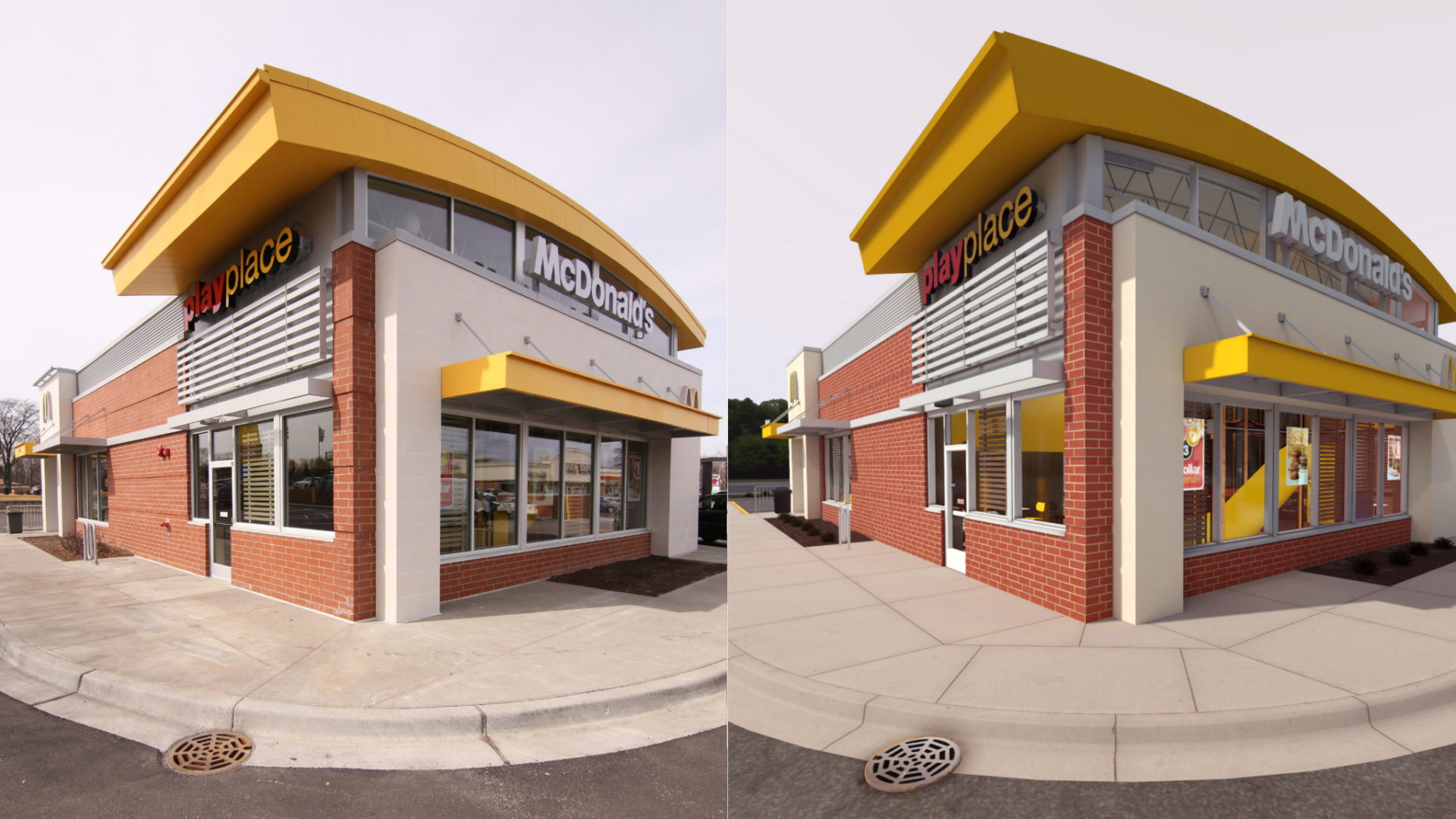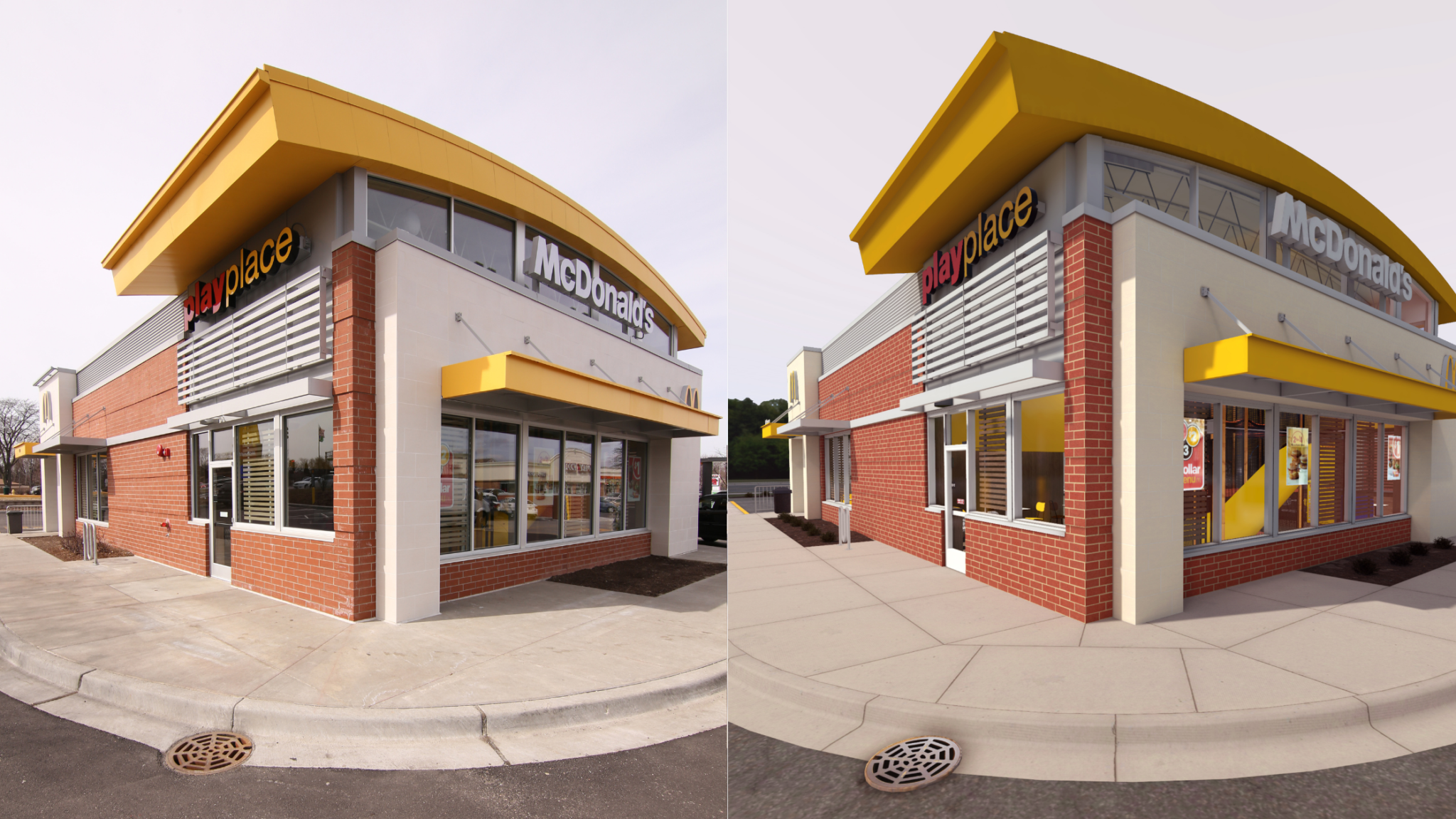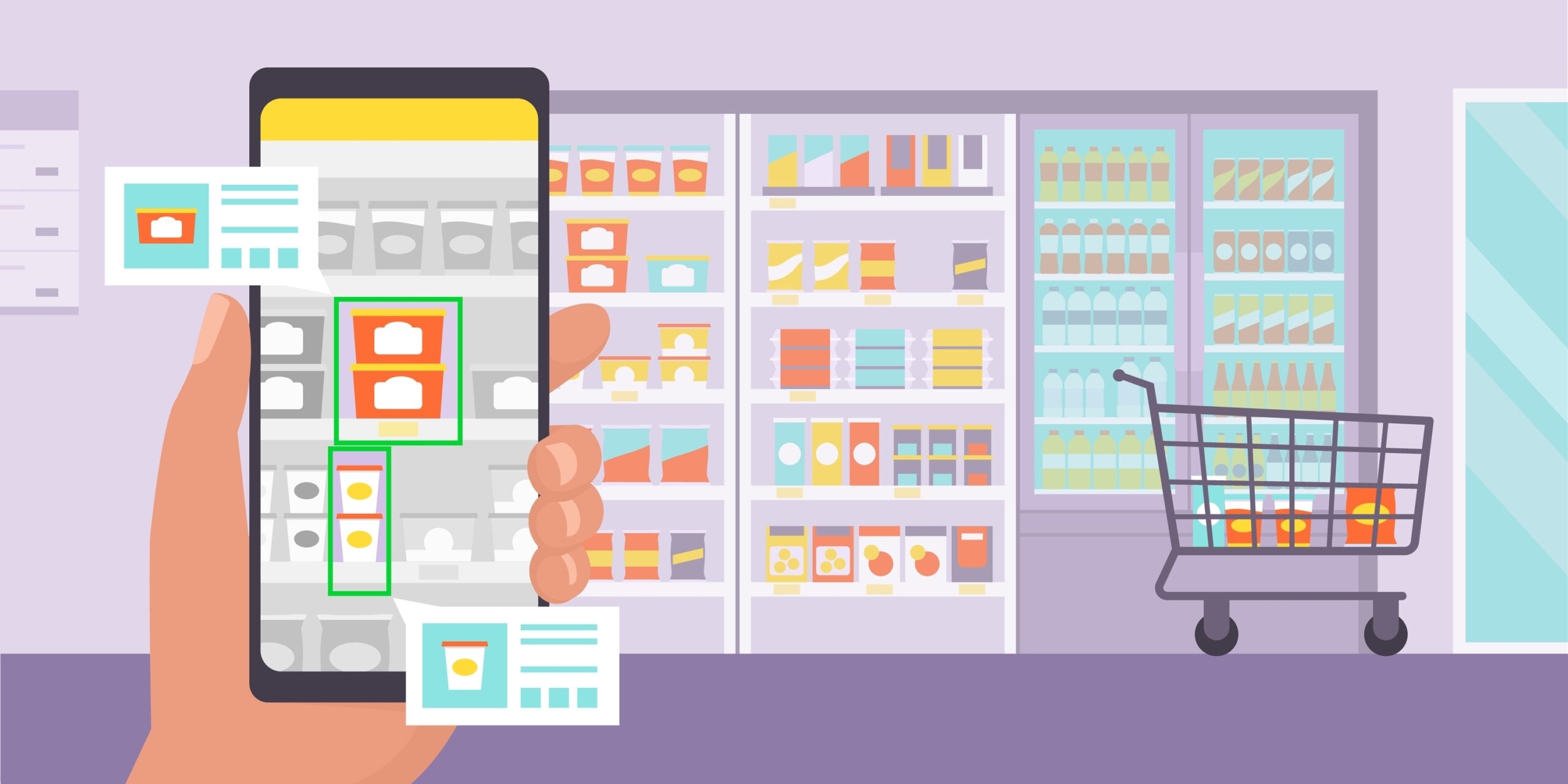If you’ve heard the term “digital twin” surfacing online lately and wondering why, you’re not alone. Digital twin technology is becoming more relevant across industries today, but for many, it’s still an unknown concept. It’s likely that, no matter what industry you work in, digital twins may have a useful application. If you find yourself wanting to know more and wondering if digital twins will impact your industry, this blog is the place to start.
Digital Twins: The Basics
What is it?
A digital twin is defined as a digital replica of either a product, process, or system. In the retail merchandising space, it’s usually a digital twin of a store, and the products, signs, displays and fixtures found in those stores. However, there already are so many applications for digital twins in all types of business, and the possibilities are still growing. To simplify things, here is a breakdown of the three main types of digital twins:
- Product: A digital twin of a product is a virtual replica of a physical object(s). Before producing a product, manufacturers can use a digital twin as a model for the real thing while running tests. They see how a digital version of the product may react to different scenarios and environments in order to test performance quality. If any issues appear in the model, the manufacturers can make adjustments before producing the physical product.
- Process: Process twins replicate, you guessed it, processes. One frequently used example is a digital twin of the process of creating a product. Think of it as a way to test out a manufacturing process before putting it into practice, allowing a company to refine their process and operate at their highest efficiency.
- System: A digital twin of a system is a replica of an entire system, oftentimes a system in manufacturing. This means a system twin operates by acquiring massive amounts of data about products, machinery, and other operational data in order to perform as a virtual model of the system. This helps manufacturers identify what they’re doing right and how they could be more efficient, save resources, perform predictive maintenance, and more.
How it Works
Digital twins are computer programs, so they don’t just replicate the visualization of a physical thing, but also how it will perform. The digital model uses data to simulate how it functions. It’s similar to how artificial intelligence and machine learning technology are fed large volumes of data in order to perform a task with accuracy. The more data the program has access to, the more accurate the simulation will be. That information allows a digital twin simulation to respond to different tests and scenarios in real-time.
In retail, decision makers in retail marketing use a digital twin to visualize store merchandising concepts, put them to the test with virtual respondents, and compare/contrast possible versions for in-store execution.
When to Use It
Digital twins are used for visualization, collaboration and training. So if you have a product to test, a new process to refine, or a system to monitor and improve, there’s a good chance that leveraging digital twin technology may be beneficial.
The outcomes of using digital twins often result in faster, better methods and products that have a higher impact in the physical world. Manufacturers often utilize digital twins throughout the entire product lifecycle (Design, Production, Operation, Disposal) in order to improve the process at every step.
History of Digital Twins
How were digital twins first conceptualized and put to use?
Apollo 13
The story of the first known digital twin is intertwined with a very public event in American history: the Apollo 13 mission in 1970. After only two days into the journey, the third attempted mission to the moon was brought to a halt when an explosion caused critical damage to the oxygen tanks and the main engine. NASA had the seemingly impossible job of problem solving for a spacecraft that was already 210,000 miles away from Earth. To make matters worse, the three astronauts inside couldn’t even see the damage to the exterior of the ship, so just diagnosing the problem was a problem in itself. The solution to this impossible situation turned out to be digital twin technology.
However, the term “digital twin” did not exist in 1970, so the technology used at the time was simply referred to as a simulator. These simulators were used for training astronauts and mission controllers, and included physical replicas of the cockpit and control consoles. But the training programs, which included failure scenarios, were all facilitated by computers.
Fortunately, this also doubled as a digital twin of the spacecraft, enabling NASA to test out solutions. While this version looked very different than the advanced digital twin technology we know today, it allowed the team to modify the simulations in order to quickly test and refine a strategy to bring the astronauts home.
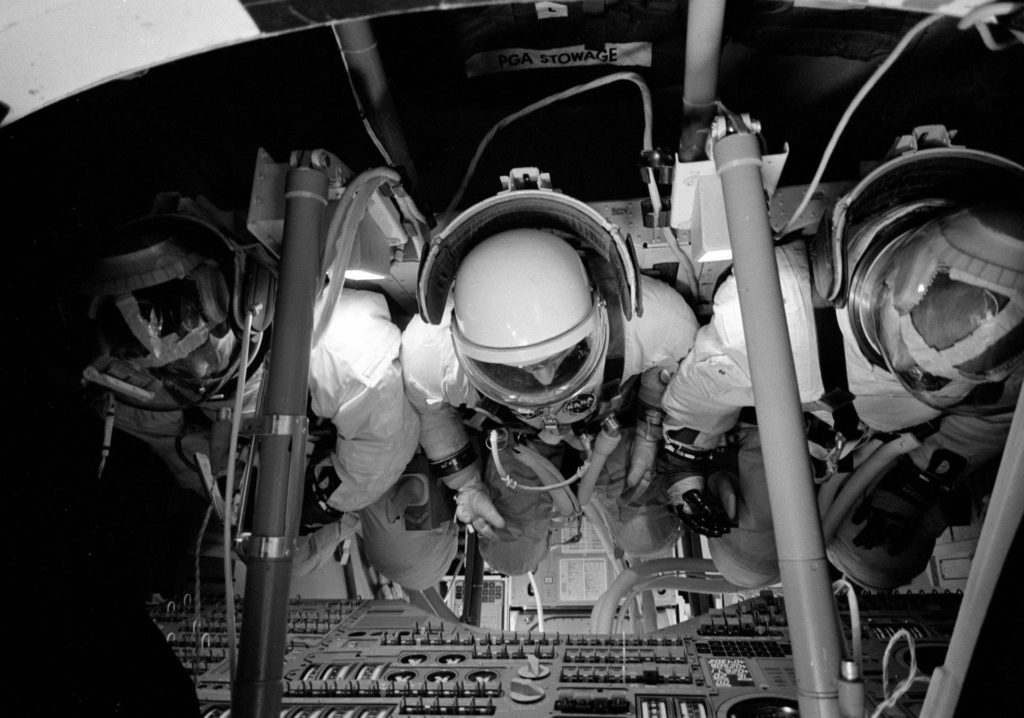
Three astronauts inside the Command Module Simulator in Building 5 during an Apollo Simulation.
Mirror Worlds
While NASA certainly pioneered digital twin technology, it wasn’t until the 1990s that experts truly developed the idea into a concept that would have much broader implications for the future of technology. In 1991, David Gelernter published the book Mirror Worlds: Or the Day Software Puts the Universe in a Shoebox… How It Will Happen and What It Will Mean. Many consider this book to be the first work where the idea of digital twins was fully realized.
In his book, Gelernter speculates on the possibility of widespread use of digital twin technology. He describes a future with a massive program that is a digital representation of our own reality, which he referred to as the mirror world.
This may sound a bit more like The Matrix than the pragmatic way in which we view digital twins today, but Gelernter was ahead of his time in terms of articulating a predictive analysis of digital twin use cases.
2002 and Modern Digital Twins
The modern iterations of digital twins began to gain more widespread recognition in 2002, when a presentation by Michael Grieves at the University of Michigan showcased a Product Lifecycle Management center. The ideas in the presentation provided connectivity and link for data flow between real space and virtual space, an essential element for a digital twin.
The Apollo 13 digital twin was more of a combination of physical replicas and a simulation program. In contrast, today’s technology truly lives in a digital world that exists alongside a physical counterpart, almost exactly how David Gelernter imagined it would.
Today, digital twin technology can be used in nearly any industry and has the capabilities to mirror massive physical spaces and systems (such as an entire city) in ways that were only ever imagined twenty years ago.
Benefits of Digital Twin Technology
While many of the benefits of using digital twins are dependent on the industry and application, a few major benefits reign supreme, no matter the circumstance. Those include:
Minimize Cost and Risk
Testing anything in a digital space before investing in the real-world resources needed to create the physical thing will reduce time, costs and risks associated with producing a product or creating a system or process.
The physical world comes with all kinds of expenses, but building a digital twin is a fraction of the cost. By refining a product to the best version of itself in a digital space first, you don’t have to commit spending physical world resources immediately.
Innovation
Digital twin technology inevitably inspires innovation. Digital spaces in general are the perfect playgrounds for bold ideas because innovators don’t need the resources to produce physical products.
This allows decision makers to see more creative possibilities, add more enhancements to a product, process, or system, and work with fewer limitations. It’s far less risky to test a big and bold idea in a digital space than it is in the physical world. Digital twins foster this mindset of testing limits and thinking bigger.
Environmentally Friendly
Digital twins reduce our dependence on physical world resources, such as the materials, labor, and energy required to construct test versions of products, environments, etc.
In the retail space, this reduces the carbon footprint of traditional store testing. For example, using a 3D digital twin of a store to test shelf arrangements and new retail strategies reduces the need to travel to a physical space where a physical store is built. This also reduces wasted test products, marketing materials, and any other physical assets.
Industries Using Digital Twins
In 2022, digital twin technology can be found in almost any major industry you can think of. Some of the leading industries adopting digital twins include:
- Healthcare: Researchers in the healthcare industry are using digital twins of the human body to study the effects of new drugs, medical devices, and diseases. This technology is advancing the industry by helping researchers bring treatments and life saving solutions to market faster and cheaper. There’s also less risk involved for patients who are the first to be treated with new drugs or medical devices because they have already been tested on a digital replica of human physiology.
- Manufacturing: Manufacturers used digital twin technology for testing and improving system designs for new production lines, testing new products, and asset lifecycle management. Manufacturers also use digital twins to monitor their machinery. Through a combination of using IoT (Internet of Things) connected devices and digital twins of machinery, manufacturers are able to view an advanced and comprehensive replica of their systems, and use them to prevent malfunctions.
- Construction: Construction companies use this technology to create digital twins of construction projects like buildings, highways, and even whole cities. These types of digital twin projects are massive undertakings because programmers have to compile digital scans, images, and other data regarding a building or multiple buildings.
- Retail: Digital twins are used to create virtual replicas of stores to assist the retail planning process. Retailers and brands can use this technology to collaboratively test product packaging, category arrangements, shelf arrangements, signage, store layout, and more. They can also get valuable insights on shopper behavior by testing new store plans in a 3D virtual environment with online shopper respondents.
Retail Applications for Digital Twins
VR tools such as virtual digital twins are becoming increasingly relevant in the retail space today. With more solutions that merge the digital and physical worlds of consumerism, it’s important to have a working understanding of how this technology could benefit you and your business. As a service provider for the retail industry, we always consider the relevant applications of evolving technology for retailers, brands, and manufacturers. While the use case and quality of digital twins in retail is certainly still growing, here are a few of the key applications relevant today:
- Visualization: Visualize new store layouts and concepts in a 3D environment during the retail planning process. You can view anything from changes in product assortment to placement of new displays and signage.
- Research: See how real shoppers might respond to your new retail strategy by testing out store concept, shelf arrangement and signage by having virtual respondents interact with the digital twin of your store. This allows businesses to track responses and use them to glean valuable shopper insights. Retailers can then optimize their retail plan without the risk of testing it out on actual shoppers.
- Retail Execution: Retailers can also use a digital twin for communicating perfect store execution. This may be basic communications materials such as videos, 3D walkthroughs or augmented reality. Retailers can also use more sophisticated functions like staff training, which can include interactive avatars, 1:1 and multi-team member sessions, surveys and learner retention tools.
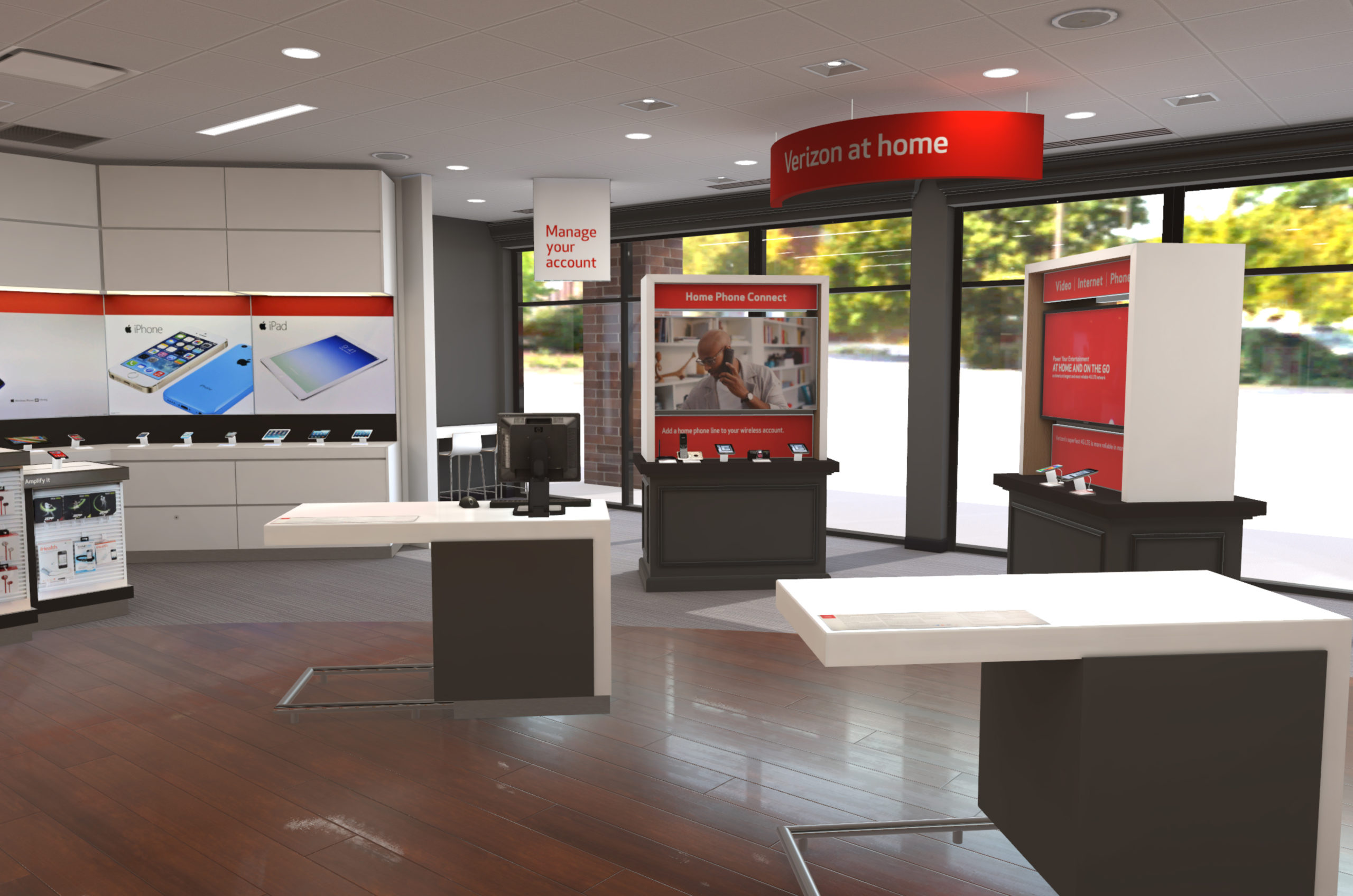
Digital Verizon store
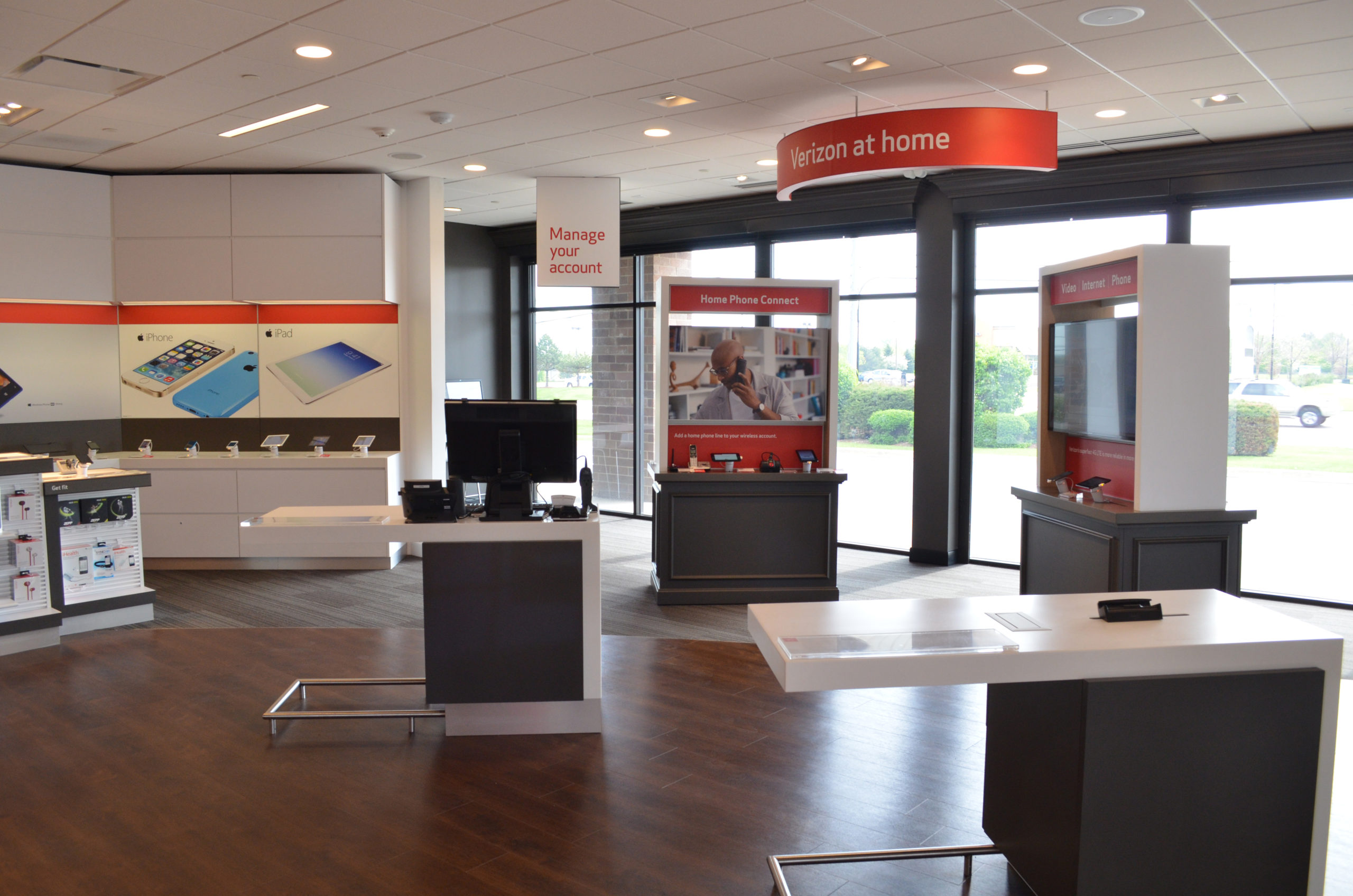
Real Verizon store
The Timing is Right for Digital Twin Technology
VR technology as a whole is significantly more advanced than it was even 5 years ago, and the public acceptance of virtual experiences is at an all time high. People are more enthusiastic than ever about VR gaming, the prospects of the metaverse are an exciting conversation topic, and virtual commerce like cryptocurrencies and NFTs are all the rage. We believe that this acceptance and normalization of VR technology can only mean good things for the future of digital twins.
In fact, the relevance of VR and digital twin technology goes far beyond just the public’s acceptance of it; this technology is becoming essential because consumers, manufacturers, and brands are ready for more.
Take the world of retail and consumer goods as an example. Strategies aided by VR testing are much more necessary today because of pandemic induced changes in consumer behavior (less in-store shopping, demand for retail experiences that have something extra). Retailers and brands need technology that gives them the freedom to fine tune their in-store strategies and consistently test their responses to rapidly changing consumer trends.
The Future of Digital Twin Technology
The market for digital twins is on the up and up. The biggest industries out there are the ones that tend to do well with digital twins (engineering, the automotive industry, aircraft production, building construction, etc.), and those industries are doubling down on their investment in digital twins. And while the digital twin market was valued at 3.1 billion USD in 2020, market analysts predict it will grow to a value of 48.2 billion USD by 2026.
Impact on the Retail Industry
The following are a few retail-specific predictions we believe are coming as a result of growing digital twin implementation.
- Testing any retail plan with a digital twin will become the standard.
- Resources will be allocated to smarter solutions, causing massive growth for those who choose to invest.
- Virtual shopping experiences with customized recommendations to a shopper’s shopping history and product preferences will be normalized.
Building Digital Twins with InContext
As a provider of retail planning solutions, we’re navigating this exciting new era of VR technology along with you. With over 3 million virtual shopper missions completed, we’re looking forward to working with more companies that need shopper insights and a retail planning solution. Get started on the transition to VR and 3D-based retail planning and execution solutions by contacting InContext today.
